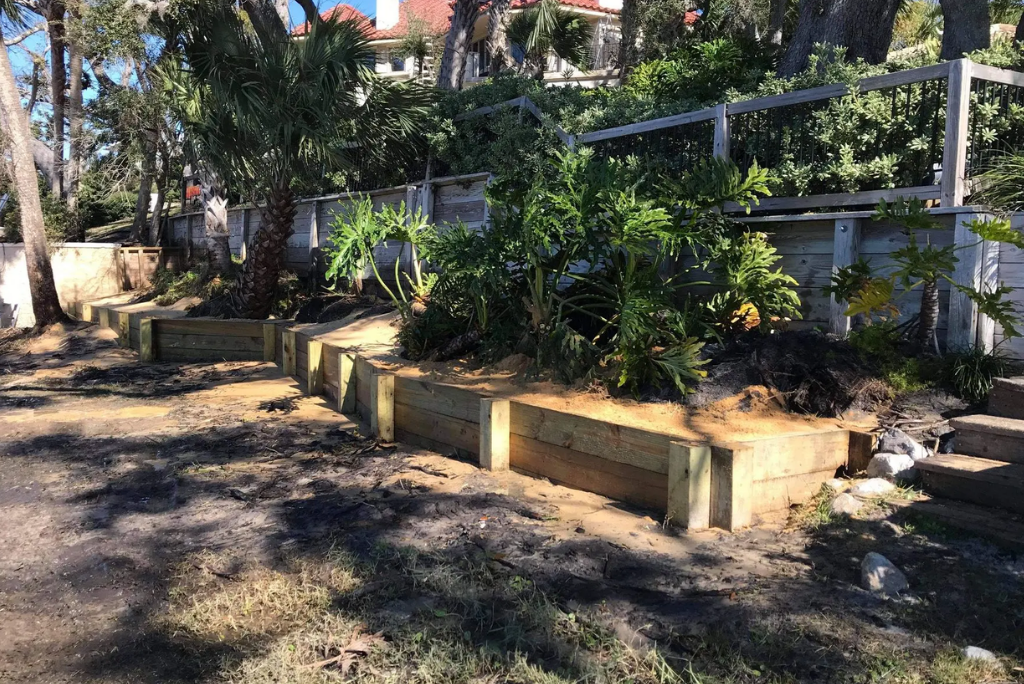
Waterfront properties are some of the most stunning homes available on the market. Their vibrant colors and close proximity to the water provide both exceptional comfort and visual appeal. The nearby water offers endless recreational activities, from swimming, making these homes highly desirable.
However, living near the water also presents its own challenges. In Florida, waterfront properties are often exposed to severe storms that can cause significant damage. Whether it’s through powerful winds or flooding, your waterfront residence is constantly at risk. Additionally, rising water levels can erode land, compromising the stability and integrity of your property.
This is where Summit Marine Development comes into play. Specializing in the construction of retaining walls, also known as seawalls, Summit Marine Development effectively redirects water away from your home to prevent both erosion and flooding. Building a retaining wall with Summit Marine Development is an excellent way to safeguard your home against harsh weather conditions and ensure its longevity.
Here’s everything you need to know about retaining walls.
What Are Retaining Walls?
Retaining walls are engineered structures designed to protect homes near water from potential water damage. Also known as seawalls or embankments, these walls are typically constructed in parallel lines along the shoreline. Their primary function is to combat erosion by channeling water into safer zones. In Florida, retaining walls can be built using various materials, including stone, concrete, and steel.
Beyond their protective role, retaining walls can significantly enhance the aesthetic appeal of your property. With a wide range of colors and styles available, you can select a design that not only safeguards your home, but also adds a visually appealing element to your landscape. In essence, seawalls provide a robust barrier against water intrusion, ensuring the beauty and stability of your waterfront home.
Top Benefits of Retaining Walls for Your Property
Adding a retaining wall to your property could be the enhancement you need. With their protective properties and various styles, these structures offer numerous benefits for your home near the water.
Some advantages of a retaining wall include the following:
1. Prevent Land Erosion
Natural water currents and persistent boat wakes can lead to the gradual retreat of shorelines. As water continuously pushes against the land and then recedes, the shoreline starts to crumble and eventually erode. Over time, this process causes the shoreline to shrink, posing a significant issue for waterfront homeowners in Florida, as loss of land can threaten the stability and safety of their properties.
Fortunately, retaining walls provide effective protection against such land erosion. These walls act as a barrier, separating the land from incoming water and preventing damage. With a retaining wall installed by Summit Marine Development, you can confidently enjoy your waterfront home without the constant concern of your shoreline receding.
2. Protect From Flooding
Heavy rainfall and storms can rapidly increase water levels, risking floods that damage your home and pose health hazards from toxins. Floodwaters can ruin flooring, furniture, and sweep away vehicles and other possessions.
Summit Marine Development offers robust protection through durable retaining walls made from materials like stone. These walls prevent water from overflowing onto your property and provide extra time to prepare during emergencies. With a retaining wall from Summit Marine Development, you can safeguard your Florida waterfront home against severe flooding.
3. Longevity
When built properly, retaining walls can endure for many decades. Utilizing robust materials like steel and stone ensures your wall effectively safeguards your property. With regular maintenance and care from Summit Marine Development, a retaining wall becomes a lasting investment, providing a protective barrier for future generations.
Additionally, seawalls enhance your property’s value by clearly defining property lines and outlining the dimensions of docks and other waterfront features. The increased protection against flooding also boosts the market value of your home, making it not only a defensive addition, but also a valuable enhancement to your Florida waterfront property.
4. Space Efficiency
Another advantage of retaining walls is their simple and compact construction. Summit Marine Development can install a seawall without extensive space, making it suitable for most waterfront areas in Florida. Typically, retaining walls are relatively short, which keeps construction costs low. This means you receive effective protection against flooding and erosion without significant financial investment.
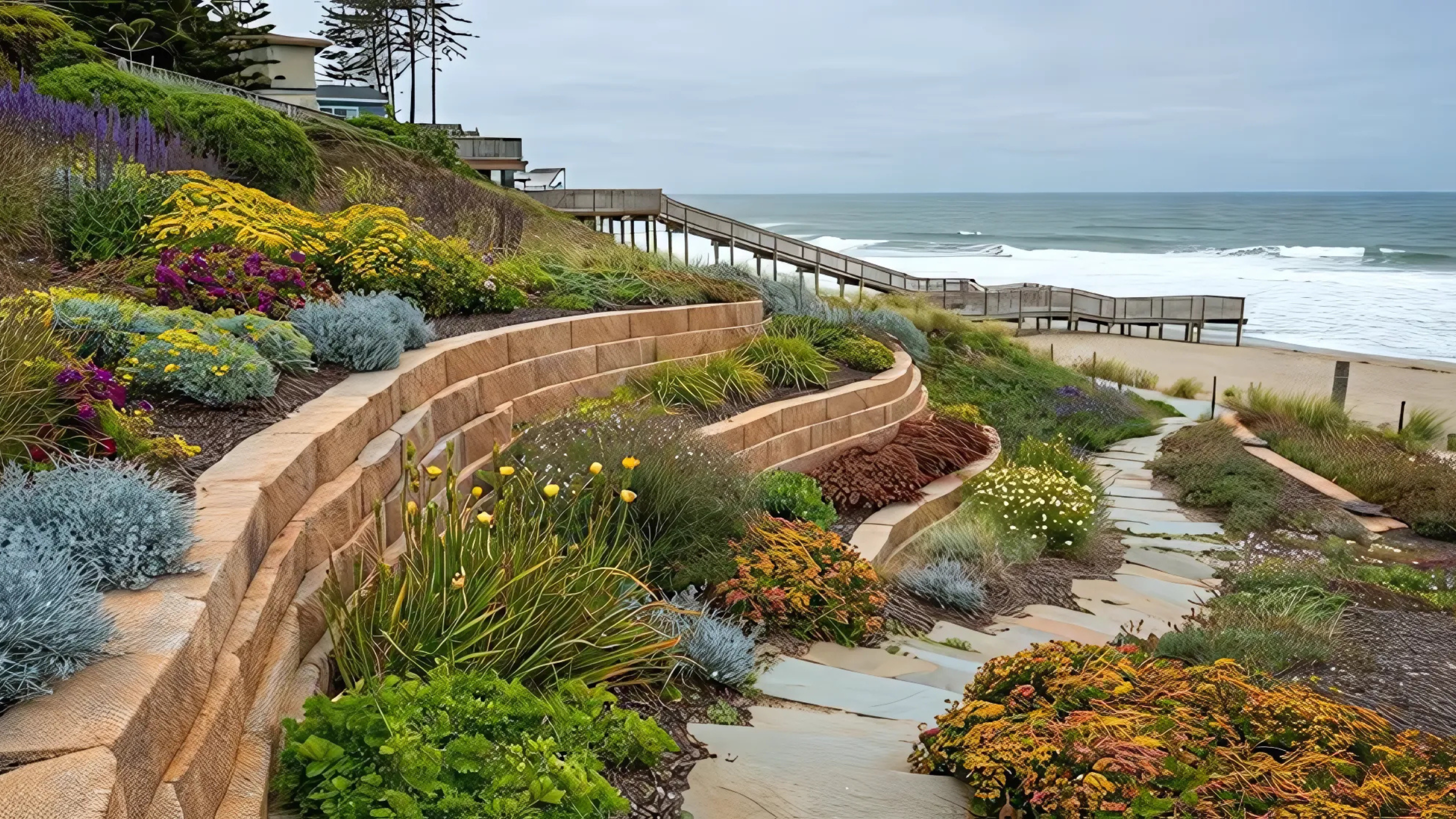
Different Types of Retaining Walls: A Complete Guide
Summit Marine Development offers retaining walls in various styles to meet different tastes and requirements. Each design has its own advantages and disadvantages, making it important to evaluate which option best fits your specific needs. Regardless of the style you select, retaining walls provide strong protection for your Florida waterfront property.
The three major types of retaining walls include:
1. Vertical Seawalls
Vertical seawalls are sturdy structures erected directly on the shoreline to guard against wave-induced erosion. Resembling fence-like constructions, they rise vertically into the air. In Florida, vertical retaining walls are highly sought after for their robust design and reliable performance.
Advantages of Vertical Seawalls
Easy to Design: The popularity of vertical seawalls ensures that a wide range of materials and design options are readily available. Their straightforward, upright shape simplifies the planning and design process.
Simple Construction: The uncomplicated design of vertical retaining walls allows for efficient and quick installation, making them a practical choice for many waterfront properties.
Potential Disadvantages of Vertical Seawalls
Direct Wave Impact: Due to their vertical orientation, these seawalls absorb the full force of incoming waves. Without mechanisms to dissipate the energy, the entire impact is borne by the structure, which can lead to faster wear and tear, especially in areas with high wave intensity.
Risk of Undercutting: Vertical seawalls can be vulnerable to undercutting, where water flows beneath the wall. Without additional structures to redirect water below, this can allow water to seep underneath and reach your property, potentially causing damage and reducing the wall’s effectiveness.
2. Curved Seawalls
Curved seawalls, also known as stepped seawalls, represent another versatile style of retaining wall. These walls are designed with a pronounced inward curve towards their center, which naturally redirects water flow by emulating the shape of a wave.
Advantages of Curved Seawalls
Natural Water Diversion: Curved retaining walls provide an organic method to channel water away from your home. As water approaches the wall, it ascends the curve and gracefully flows back into the sea or river, effectively preventing it from reaching your property.
Enhanced Durability: Unlike their vertical counterparts, curved seawalls do not bear the full impact of incoming waves. The curved design slows down the water as it makes contact, reducing erosion and extending the lifespan of the seawall. This results in less frequent maintenance and greater long-term reliability.
Considerations for Curved Seawalls
Limited Aesthetic Options: Curved seawalls may offer fewer material and shape choices compared to other styles. If you have a specific design vision for your waterfront property, the aesthetic limitations of curved seawalls might not fully align with your preferences.
Higher Construction Costs: The unique design and engineering requirements of curved seawalls often lead to increased construction expenses. Additionally, the installation process may take longer due to the intricate curvature, potentially impacting your project timeline.
3. Mound Seawalls
Mound seawalls present a unique alternative to vertical and curved seawalls. Constructed from concrete blocks, rocks, and various stones, these walls work by dispersing wave energy upon impact, rather than directly confronting incoming waves.
Benefits of Mound Seawalls
Cost-Effective: Mound seawalls are often the most economical choice for seawall construction, making them perfect for protecting larger areas of property without a hefty investment.
Effective Wave Dispersion: These seawalls excel at diminishing the strength of waves and breaking them apart. The assortment of rocks used serves as natural barriers, preventing ocean waves from reaching and damaging your land.
Considerations for Mound Seawalls
Limited Resistance to High-Pressure Waves: Mound seawalls are best suited for calm water conditions. They typically cannot withstand high-velocity waves and may begin to deteriorate upon strong impacts. When the materials break apart, it creates an easy path for water to infiltrate and reach your property.
Reduced Durability: Compared to other seawall types, mound seawalls are less durable. In areas with intense wave activity, the rocks may wear away quickly, necessitating frequent replacements and repairs to maintain their protective function.
Best Materials for Building a Retaining Wall
Looking for the best materials for your retaining wall or seawall? Choosing durable, affordable, and high-quality materials is essential for building a strong, long-lasting structure. Whether you’re considering concrete blocks, natural stone, timber, or poured concrete, each option offers unique benefits for landscaping or waterfront projects.
At Summit Marine Development, we specialize in helping Florida homeowners choose the right seawall materials to ensure maximum durability and effectiveness. From enhancing your outdoor space to protecting your property, the right retaining wall or seawall materials can make all the difference. Our team of experts will guide you in selecting materials that match your priorities—whether it’s aesthetics, strength, or environmental sustainability.
Contact us today to find the perfect solution for your retaining wall or seawall needs!
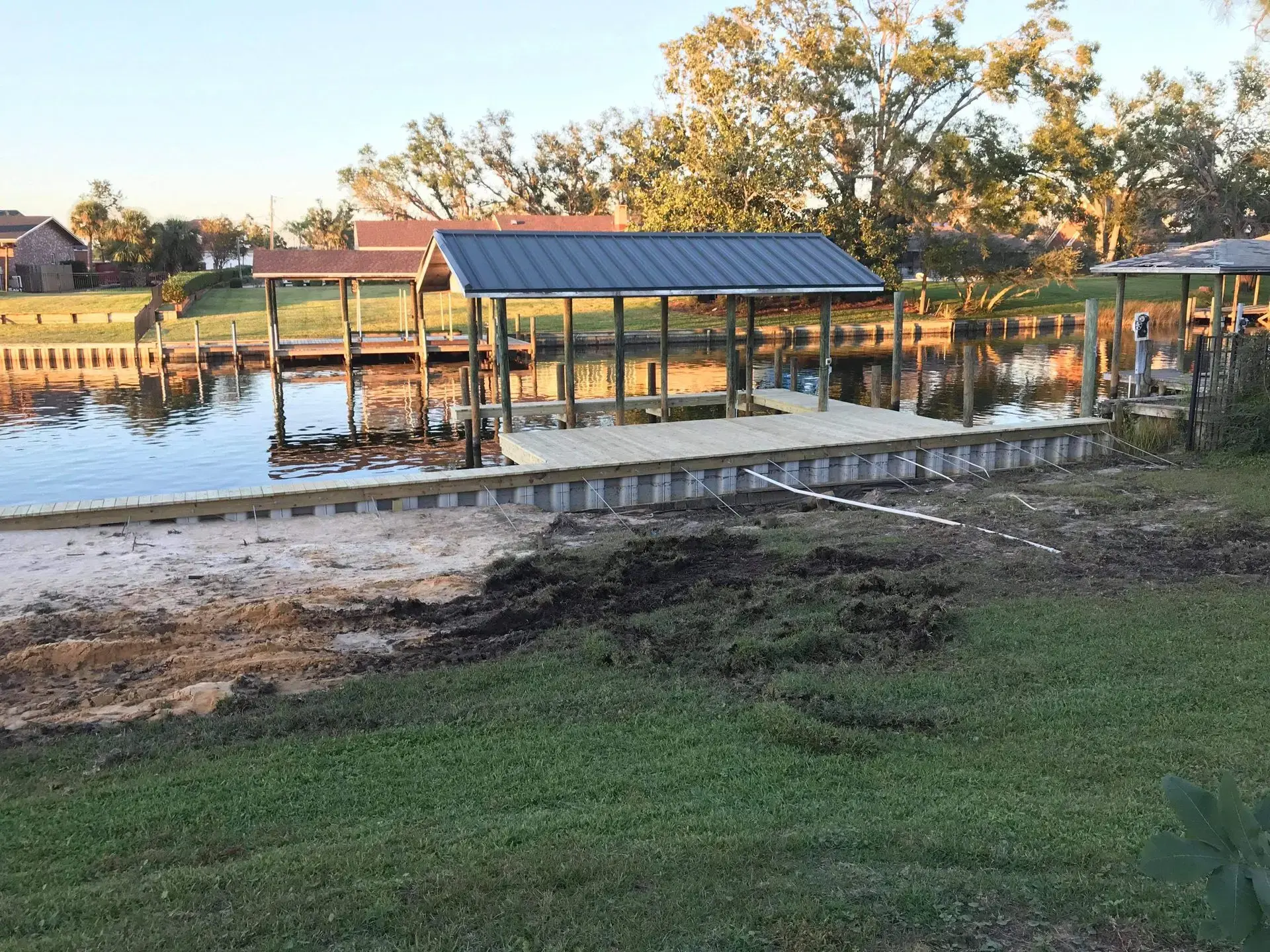
Popular Retaining Wall Materials: A Guide to Choosing the Best Option
Steel: Steel is renowned for its exceptional durability. A steel seawall can last over three to four decades with proper maintenance, making it a long-term investment for your property. Its strength ensures reliable protection against erosion and flooding, providing peace of mind for years to come.
Concrete: Concrete is one of the most popular materials for seawall construction due to its solidity and resilience. When properly maintained by patching cracks and holes, concrete seawalls can endure for decades. This material offers a robust barrier against water intrusion, ensuring the stability and safety of your waterfront home.
Vinyl: Vinyl seawalls are a modern option available in various colors, allowing greater customization to match your property’s aesthetic. Vinyl is highly resistant to corrosion, often outlasting steel in harsh environments. However, installation can be more challenging and time-consuming than other materials.
Composite: Composite seawalls are engineered using fiber-reinforced polymers, offering extreme durability and strength. These seawalls are designed to withstand harsh weather conditions and reduce maintenance needs. However, the high-quality construction of composite materials can make them more expensive than other options.
Timber: Wooden seawalls are a popular choice in rural areas due to their natural appearance and effectiveness in keeping water away. Timber requires regular maintenance to prevent deterioration and ensure longevity. When well-maintained, wooden seawalls can provide both functionality and rustic charm to your waterfront property.
Riprap: Riprap consists of large stones layered along the shoreline, making it one of the simplest and most environmentally friendly seawall options. Riprap seawalls are easy to construct and maintain—damaged stones can be easily replaced. This method not only protects your property from erosion, but also supports local ecosystems by allowing marine life to thrive.
Ask professionals at Summit Marine Development for help on how to build a retaining wall. They can recommend the right materials for your needs.
Choosing the Best Retaining Wall for Your Needs
Installing a retaining wall on your waterfront property is a smart way to protect your land from erosion and enhance its appearance. Choosing the right seawall design requires careful planning to ensure it meets your specific needs.
To help you make the best choice, here are some key factors to consider when selecting the ideal seawall for your waterfront property:
1. Size of the Body of Water
The size and volume of the body of water play a major role in determining the best type of retaining wall. For example, properties along the Gulf Coast often face strong currents and large waves, requiring durable options like curved concrete seawalls. In high-energy water environments, riprap or mound walls may also be excellent choices for added stability.
2. Water Currents and Wave Strength
Water movement directly impacts the durability and lifespan of your seawall. Areas with powerful currents and intense waves require robust materials like concrete, which can withstand constant pressure. For properties near calmer, slow-moving waters, less heavy-duty materials may suffice while still providing reliable protection.
3. Saltwater vs. Freshwater
Salt content is another critical factor in choosing seawall materials. Saltwater is highly corrosive, especially to materials like untreated steel. For properties near saltwater bodies, it’s best to choose corrosion-resistant options, such as concrete or specially coated stones. This ensures your seawall remains strong and effective for years to come.
At Summit Marine Development, we understand the unique challenges of waterfront properties in Florida. Whether your property is located along the Gulf Coast or by a peaceful lake, our expert team will design and install a seawall that meets your needs. Protect your shoreline with a custom seawall built to handle the elements.
Contact us today for a free consultation on seawall design and installation for your Florida property.
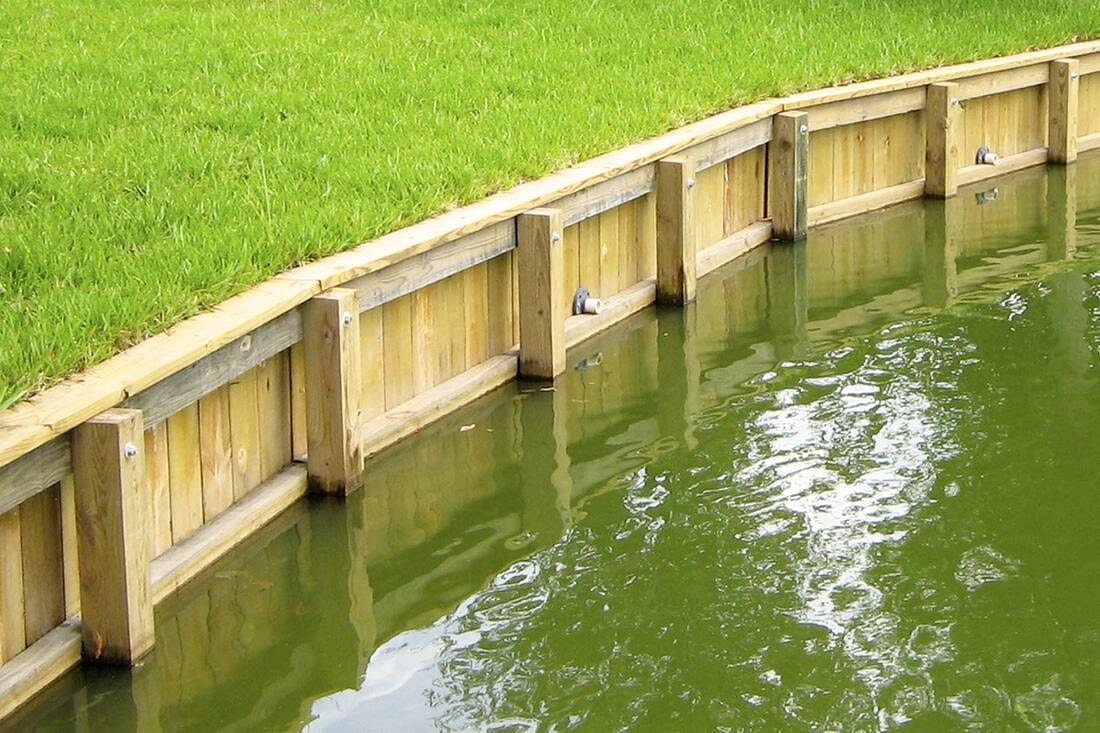
Choosing the Right Seawall: Shoreline Conditions and Activity Levels
When planning to install a seawall, understanding your shoreline conditions and the level of water activity in your area is crucial. These factors determine how much wear and tear your seawall will face, impacting its durability and effectiveness over time.
Understanding Shoreline Conditions
The type of shoreline you have, including its composition and slope, plays a key role in selecting the best seawall. Some seawall designs work better with sandy or rocky soils, while others are ideal for flat or sloped terrain. Choosing a seawall that matches your shoreline’s natural characteristics ensures long-lasting stability and protection against erosion.
Considering Activity Levels
The amount of water activity near your property significantly affects your seawall’s durability. High-impact activities like boating, jet skiing, or frequent water traffic create strong waves and wakes that accelerate shoreline erosion and increase stress on the seawall. In such areas, a heavy-duty, impact-resistant seawall is essential. On the other hand, if your shoreline experiences calm waters and minimal activity, a simpler seawall design may be sufficient.
Protect Your Shoreline with the Right Seawall
Whether you’re dealing with high-energy water activities or a quiet, low-traffic shoreline, choosing the right seawall ensures long-term shoreline protection and erosion control. Be sure to evaluate your specific conditions to find the most effective seawall design for your property.
Appearance
The appearance of your seawall is important, especially if you want it to complement your home or landscape design. While some retaining walls prioritize functionality, others offer more customization options to enhance the aesthetic of your waterfront property.
For example, vinyl and composite materials come in various colors, allowing greater design flexibility. In contrast, wood or timber seawalls have a more natural look, but are harder to customize. When selecting a seawall, consider how important its appearance is to you, and balance that with your structural and protective needs.
Environmental Considerations
If sustainability is a key factor in your decision, it’s important to choose a seawall style that minimizes environmental impact. Seawalls can influence marine life and the surrounding ecosystem, so selecting eco-friendly materials can help preserve the natural habitat.
Riprap, made from natural stone, is the most environmentally friendly option. It allows water filtration and provides habitat for aquatic organisms, while preventing shoreline erosion. On the other hand, materials like vinyl and composite offer durability and customization, but are not entirely sustainable.
Budget
Cost is a key factor when choosing a seawall. While some options are more expensive, investing in quality can prevent costly repairs down the line. Avoid choosing the cheapest option solely to save money, but also ensure your selection fits within your budget. The best approach is to find a balance between affordability and long-term durability. Summit Marine Development can help you select a seawall that meets both your financial and structural needs.

How to Maintain and Repair a Retaining Wall: Tips for Long-Lasting Support
Once you install the best retaining wall for your needs, it’s essential to regularly maintain and repair it. Here’s an overview of steps to take for seawall maintenance:
How to Inspect for Damage
Regularly checking your seawall for imperfections helps prevent long-term damage. Addressing issues early can extend its lifespan and effectiveness. During inspections, look for:
Plant Growth: Weeds can cause cracks and weaken the foundation. Remove them promptly to prevent water infiltration.
Holes & Cracks: Even small cracks can compromise your seawall’s strength over time. Seal them before they expand.
Structural Integrity: Different materials have unique vulnerabilities—vinyl may crack, wood can rot, and riprap stones may shift or dislodge. Check for signs of deterioration specific to your seawall type.
Routine inspections help catch problems early, ensuring your seawall continues to protect your property efficiently.
How to Maintain Your DIY Retaining Wall: Tips and Tricks
Many minor seawall issues can be easily repaired, with simple fixes to keep your wall in top condition. Here are a few quick solutions to address common problems:
Clear Weep Hole Clogs: Weep holes help prevent pressure buildup by allowing excess water to drain from your seawall, especially during heavy storms and rainfall. Regularly inspect them for blockages and clear any debris to ensure proper water flow. Clogged weep holes can trap water, increasing strain on the wall and potentially leading to cracks or structural damage. Keeping them clear helps maintain the integrity of your seawall and extend its lifespan.
Seal Small Cracks: For minor cracks, apply marine grout or liquid concrete to prevent further damage. These materials provide a quick and effective fix, strengthening the seawall and preventing water from seeping in. Regularly sealing small cracks helps maintain the wall’s strength and longevity.
Apply Waterproof Sealant: Certain seawalls benefit from a waterproof spray or sealant, which adds an extra layer of protection against water erosion. Applying this coating can help extend the life of your seawall by preventing moisture damage and reducing wear over time.
How to Spot Warning Signs of Serious Problems
While minor seawall issues can be fixed with simple maintenance, more serious problems require expert attention. Understanding the difference between small repairs and major structural concerns helps you determine when to seek professional assistance.
Signs a Seawall Needs Major Repairs:
Shifting or Sinking Walls: If your seawall begins to tilt, shift, or sink, it’s a sign that water pressure has exceeded its capacity. Left unaddressed, this can weaken the foundation and lead to a complete structural failure. Immediate professional intervention is crucial to prevent further damage.
Sinkholes & Soil Loss: A loss of soil near your seawall may indicate water seeping through or underneath it, weakening the ground and causing collapse. If not addressed, this can lead to severe erosion and structural instability. Prompt repairs are essential to prevent further damage to your property.
Rust & Corrosion: Rust on your seawall is a clear sign of water damage. If left untreated, it can spread and weaken the structure, compromising its durability. Addressing rust early helps prevent further deterioration and extends the lifespan of your seawall.
If you notice any of these signs or other major issues, contact a professional maintenance team. Summit Marine Development has the expertise to assess the extent of your seawall damage and provide the necessary repairs. If you have any concerns about your seawall, consider calling our experts to ensure you take the right steps.
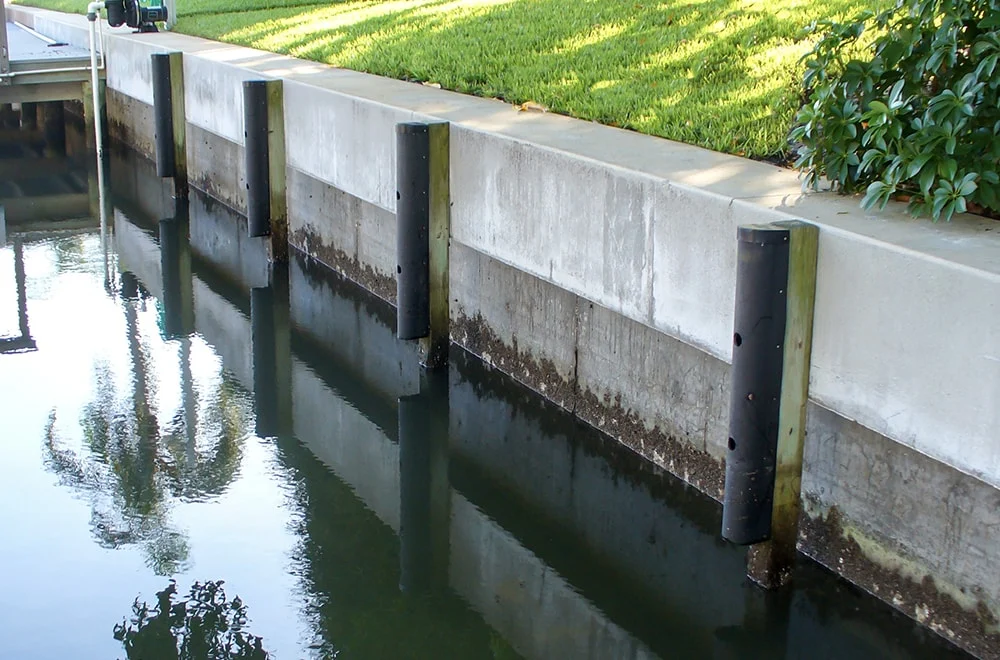
Protect Your Florida Waterfront Property with Expert Seawall Solutions
Protecting your waterfront property from erosion, flooding, and land loss is critical to maintaining its value, safety, and beauty. At Summit Marine Development, we specialize in designing and building custom seawalls to withstand Florida’s unique coastal conditions. Whether you need a vertical, curved, or mound retaining wall, our team ensures the best materials and designs are tailored to your specific needs.
A high-quality seawall not only prevents erosion, but also enhances the aesthetics of your waterfront property. Regular seawall maintenance and timely repairs are essential to keeping your structure strong and effective for years to come.
Investing in a durable, professionally constructed seawall is a smart move for any Florida waterfront homeowner.
Contact Summit Marine Development today to learn more about our expert seawall construction, repair, and maintenance services. Safeguard your Florida waterfront property with a reliable, long-lasting solution!


